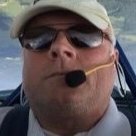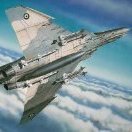Search the Community
Showing results for tags 'hurricane'.
-
Hello. When my 1/24 scale FW190 build hit a snag (should be recoverable), I didn't want to stop building - so I embarked on the classic Airfix 1/24 Scale Hawker Hurricane. One of my all time favourite aircraft. I originally built this kit as an over excited prepubescent kid during the 1970's and of course, as delighted as I was with it, it obviously looked like it had been built by an over excited prepubescent kid - with little glue control, his sisters nail sanders and over sized paint brushes. This time I hoped to do it more justice. The subject of my build is P3803 of 501 Squadron. This aircraft was lost off the coast near Ramsgate on 12th August 1940 with F/O Kazimierz Lukaszewicz (Polish) at the controls. Sadly neither he nor his aircraft were ever found. The build is mostly out of the box - except for the Yahu Instrument Panel, Barracuda Studios Resin tyres, and RB Productions Sutton Harness. The decals were to my own design and printed by https://www.custom-model-decals.com/. All paints and varnishes are Vallejo. One modification I did make was to the (in my opinion) over-sized nose. After looking at different options I eventually stuffed it with milliput and then sanded it down to reduce the base diameter by a small margin. As you can tell... I'm not a photographer! I am pleased with how it has turned out. As with all models there are a few places I think could do with more work - but in reality I think I'm going to call this one done. Maybe time to get back to the FW190 . Thanks for looking.
-
As some will know, when I make a model I like to have a connection of some sort with the subject, and as some will also know I had the pleasure of flying in a two-seat Hurricane earlier this year. So whilst I'm still building a Hurricane Mk I at the moment, I also have Revell's new tool Mk IIB waiting in the wings. Francis K Mason's book lists the serial numbers of most Hurricanes and their brief history, so I looked up BE505 (the Hurricane I flew in) as a possible subject, but what took my eye was a closely related Hurricane, BE503 of 175 Squadron which was based at Warmwell, a village in my home county of Dorset and close to where I used to live (Warmwell is best known as the base for Westland Whirlwinds). There is a beautiful little church in the village which has 22 graves of servicemen tended by the Commonwealth War Graves Commission. I searched the CWGC site to see if any airmen from the airbase were buried there (there aren't) but the name of Jaroslav Hlavac stood out.....more investigation! Jaro's rather sad story is worth reading: "Jaroslav Hlaváč was born 11 October 1914 at Petřvald, a village, about 10 km east of Ostrava, in the Moravia region of Czechoslovakia. He attended the local school until he reached the 4th grade and then he moved on to the secondary school at Jistebník, about 30 km away. On completion of his education, he trained as a metal turner at Vítkovice, about 9 km from his village. In 1933, aged 19, Jaroslav commenced his compulsory military service and was selected for the Czechoslovak Air Force. He attended the Military Aviation School at Prostějov between 1934 and 1936, from where he graduated as a fighter pilot. His first posting, at the rank of sergeant, was to the 7th Squadron of the 2nd Air Regiment based at Vyškov as an operational pilot in Letov Š-328 biplane reconnaissance aircraft. He later returned to Prostějov where he attended a fighter pilot training course, graduating in 1938. Jaroslav was then posted to the 35th Squadron of the 2nd Air Regiment based at Olomouc airbase which was equipped with Avia B-534 biplane fighter aircraft. He remained there until the German occupation of Czechoslovakia on 15 March 1939, by which time he had achieved 295 flying hours. After the German occupation of Czechoslovakia on 15 March 1939, the Czechoslovak Air Force was quickly disbanded by the Germans and all personnel dismissed. The same fate befell most of those serving in the Czechoslovak Army. For the military personnel and many patriotic Czech citizens, this was a degrading period. Many sought to re-dress this shame and humiliation and sought the liberation of their homeland. Germanisation of Bohemia and Moravia began immediately, but by 19 March 1939 former senior officers of the now disbanded Czechoslovak military had started to form an underground army, known as Obrana Národa [Defence of the Nation]. One of their objectives was to assist as many airmen and soldiers as possible to get to neighbouring Poland where Ludvík Svoboda, a former distinguished Czechoslovak Legionnaire from WW1, was planning the formation of Czechoslovak military units to fight for the liberation of their homeland. Within Czechoslovakia, former military personnel and civilian patriots covertly started to arrange for former Air Force and Army personnel to be smuggled over the border into Poland to join these newly formed Czechoslovak units. Obrana Národa also worked in co-operation with Svaz Letců, the Airman Association of the Czechoslovak Republic. These two organisations provided money, courier and other assistance to enable airmen to escape to Poland. Usually, this was by crossing the border from the Ostrava region into neighbouring Poland. News soon began to be covertly spread amongst the former Czechoslovak airmen and soldiers and many voluntarily made their personal decision to go to Poland. Jaroslav was one of those who decided to escape and enlist in one of those units. In early May 1939, he successfully managed to cross the border to Poland and reported for duty at the Czechoslovak Consulate at Kraków. Once in Poland the Czechoslovak escapees were to find that Poland was not permitting the formation of foreign military units on its territory. However Czechoslovak officials had been in negotiations with France, a country with which Czechoslovakia had an Alliance Treaty. Under French law, foreign military units could not be formed on its soil during peacetime. The Czechoslovak escapees could only be accepted into the French Foreign Legion with the agreement that should war be declared they would be transferred to French military units. The Czechoslovaks would have to enlist with the French Foreign Legion for a five-year term. The alternative was to be returned to occupied Czechoslovakia and face German punishment for escaping – usually imprisonment or execution with further retribution to their families. The Czechoslovak escapees were initially billeted at Małe Bronowice, a former Polish army camp on the outskirts of Kraków whilst arrangements were made for their departure to France. When those arrangements were completed, Jaroslav, with other escaped Czechoslovak airmen, travelled by train to Gdynia, Poland, where, they boarded a ship which took them to Calais, arriving on 31 July. On arrival in France, the Czechoslovak airmen were taken to the Foreign Legion’s recruitment barracks at Place Balard in the south west of Paris for medical examination and recruitment documentation to be completed. This time was to serve as a familiarisation period to learn the ways of the Legion and to study, which continued after their acceptance whilst they waited for transfer to Sidi-bel-Abbis, the Legion’s training camp in Algeria. But before that process could be completed, war was declared on 3 September 1939 and instead the airmen were transferred to l’ Armée d’Air recruitment centre at Dugny, near Paris. Upon acceptance by the l’ Armée d’Air, Jaroslav was transferred to their training base at Centre d’Instruction de Chasse at Chartres about 75 km west of Paris, for conversion onto French aircraft. Jaroslav arrived there on 11 September 1939 and completed his training on 8 March 1940. He was then posted, as an operational pilot with the rank of Caporal Chef (Sgt) to GC III/7, based at Vitry le François near the Swiss-German border and equipped with MS-406 fighter aircraft. When the Germans invaded France, the rapidity of their Blitzkreig – lightning war – caused GC III/7 to have to change their airfields frequently as they retreated westward. On 17 June 1940 Jaroslav and other Czechoslovak airmen were transferred to GC I/6 based at Ussel which was also equipped with MS-406 fighter aircraft. Three days later, France capitulated. GC I/6 was now at Clermont-Ferand airbase, and its Czechoslovak airmen were released from Armée de l’Air service; Jaroslav had flown 68 operational hours in that service. They made their way to Port Vendres and on 24 June boarded the ‘General Chanzy’ which took them to Oran, Algeria. They then travelled for four days by train to Casablanca, Morocco, where they boarded a ship which took them to Gibraltar, where they transferred to a ship which brought them to England. Shortly after arrival to England, he was accepted into the RAF VR and on 12 July was posted to the newly formed 310 (Czechoslovak) Squadron at Duxford near Cambridge, where he was assigned to the squadron’s reserve pool of pilots who were awaiting conversion training on Hurricanes. When 310 Squadron became operational on 17 August 1940, it was no longer possible for training to be undertaken within the squadron due to shortages of aircraft and instructors so the reserve-pool pilots were assigned to 6 OTU at Sutton Bridge near Spalding, Lincolnshire on 17 August. Jaroslav completed this on 10 September and the following day he was posted to 79 Squadron (Madras Presidency) which was equipped with Hurricane Mk Is based at Pembrey, South Wales. Whilst there he made only a few training flights. On 8 October, Jaroslav was posted to 56 Squadron (Punjab) based at Boscombe Down near Salisbury, also equipped with Hurricane Mk Is. On 10 October, Jaroslav made his first operational patrol when six Hurricanes took-off at 09:20 for a patrol over Warmwell, Dorset, returning at 09:40. Later that morning at 11:55, six of the squadron’s Hurricanes were scrambled to intercept a Luftwaffe formation of 30 Bf110s escorted by 30 Bf109s approaching the Portland Naval Base. Jaroslav was flying Hurricane P3421. Jaroslav was killed in action when he was shot down by a Bf109 flown by Oberleutnant Julius Meimburg of 4/JG2 west of Wareham; his Hurricane crashed at Manor Farm Worgret. He was 26 years old and had become the fifth Czechoslovak pilot to be killed in the Battle of Britain." How very sad that after all his training, his travels and his determination to fight he was killed on his second day with his new Squadron, and on his first engagement with the Luftwaffe. An extract from the Squadron ORB for the day: ...and what a coincidence that on both ops. F/Lt Brooker accompanied Hlavac. What a coincidence, Brooker and his Hurricane are the subject of my current Hurricane build in the "Aces High GB": This is Jaro's resting place: and his headstone: The context for the battle; the attack was on Portland Harbour which was an important base for the Naval Fleet (what a coincidence, I lived on Portland for 30 years and had to be evacuated at one point for two days because an unexploded German bomb had been found in a quarry!), Warmwell to the north and Hlavac's Hurricane crashed at Worgret, west of Wareham (what a coincidence....I used to teach in Wareham and rode past the crash site very day without knowing it): So I've started a bit of research into 175 Squadron at Warmwell with their Hurribombers. Most of the time I think they were bored stiff with very little happening except for training exercises, beating up Portland Bill and the aerodrome and most went one or two at a time to Boscombe to look at some captured Luftwaffe aircraft being evaluated there, but they had their moments of excitement: attacking gun positions on the French coastline, and: So a future project: and in the name of research only (how serendipitous): Cheers ....and a Happy Christmas followed by the Healthy New Year!
- 10 replies
-
- hurricane
- 56 squadron
-
(and 3 more)
Tagged with:
-
1/32 AIMS Hurricane PR 1 Hi everyone I thought I would make a start on my AIMS Hurricane PR 1 conversion. I love Monotone finishes mostly because i loath masking but i feel that monotone finishes require a little help and so I try to open at least one hatch or panel. This in turn leads to more work obviously. The wing assemble / gear bay is together and ports filled in - there were a lot of sink holes and badly fitting leading edge parts to fill also. It is a crying shame that Revell produced smooth wings - it is the biggest let down of the kit and expensive to correct as a rivet wheel burring up the plastic surface a little just will not cut it - not in this scale. Pipework and panel locks are a must as a result of the panel being left off which made the Hurricane 'Inside and Out' book a must! Eyes of the Phoenix is also a must read for Hurricane recon operations in the far East and has more PR and Tac R Hurricane photos in it than any other book I am aware of. Finally I have no authority to say that where I have placed the Camera heater selector box is correct - is is purely deductive reasoning based on where the pilot can reach it and where the structure and a lack of other fittings allow. Enjoy John
-
I told you, my resistance is low. A mere week after I received the kit, here are the first pics of my new Hurricane in the making. Following the Revell instructions, I started with the cockpit. It’s a complicated affair as per the original but nonetheless an easy assembly as long as you take care to prepare the parts prior to reaching for the glue. Paints are Gunze , AK and Tamiya lacquers. Stock instrument panel painted with bezel decals added Seat completed. Scratch-built Sutton harness from paper and tin foil Seat installed Harness painted with Vallejo acrylics Gunsight minus reflector glass installed Escape hatch interior Cockpit in situ. Closing the fuselage next. Next time: the wheel wells Thank you for looking and Happy New Year everybody! Cheers, Quang
-
1/48 Airfix Hawker Hurricane Mk I representing P2638 of No. 274 Sqn RAF, flown by Sgt Pilot FH Dean, based at Sidi Barrani, Eqypt, July 1942. Aircraft had previously been PR Mk I P2638 of 208 Sqn, LG 39 / Burgh el Arab, Egypt, early July 1942. A short time latter P2638 was passed to 274 Sqn to serve as a fighter for a second time and was almost immediately lost, being shot down by three bf 109 F’s on the 27th July 1942. I really enjoyed this kit from beginning to end. the plastic was not too hard for me to use the rivet tool with bad hands and the clear plastic parts and the decals are some of the nicest I have ever used but there are a few things needed to be able to represent the photo of this aircraft a little better. You will note that the photo shows that P2638 has an early style radio mast, a rear view mirror, tropical cooling vents at the side of the lower cockpit (both sides) and an oil collector ring around the nose - none of which are represented in the Airfix kit. The mast was just changed as best as possible but does not look right. The oil collector ring is just fuse wire cut and bent to shape and the rear view mirror was from Quickboost. I also used Eduard Spitfire Mk Vb spares - deHalliand prop which was much thinner than what Airfix have provided as well as the Eduard early Spitfire exhausts. Also used was the Eduard canopy mask and Sutton Harness sets. The beautiful Airfix canopy was treated to some handles from the spares box. Finally I had ordered the Brengun wheel set as I have seen thinner tractor wheels compared to what Airfix provide for the tail wheel but alas when the set came along with the Quickboost rear view mirror - the packet contained something completely different to what the label advertised and so I just wanted to finish the model. A lovely little kit well deserving of a little extra love here and there. I wish I had taken the time to remove the overly raised fasteners as well as add a slight curve to the cockpit panels where they meet the wing - next time! Thanks for looking, John
-
This is the 1/32nd Fly Hawker Hurricane Mk2C in the markings of "FM-E", of Flight Commander Gerald Stapmea Stapleton, DFC & Bar 257 (Burma) Sqn, RAF Honiley, March, 1942. The build thread can be found here. I've always loved the look of the cannon-equipped Hurricanes, very glad to have one in the collection at last. Thanks to everyone who gave suggestions and made comments during the build, much appreciated! Thanks for looking Iain
- 20 replies
-
- 1/32
- hawker hurricane
-
(and 4 more)
Tagged with:
-
Hi everyone, Being printed tomorrow is my 1/32 Rotol spinner for the Revell Mk II Spitfire kit which does not have one in the kit. It will also be perfect for the Pacific Coasts Hurricane. I am also having the spinner printed in 1/48 for the Airfix Mk I Hurricane kit if I might throw that in there. Thanks John
-
Hello modeller friends, FLY Models caused quite a stir when they released their 1/32 Hurricane in April 2016. By a general consensus on the modelling forums, it's the best Hurricane on the market: accurate shape, good dimensions, adequate surface detail and unbeatable bang for the buck, etc… One question remains: HOW DOES IT BUILD? Strangely there are but a very few WIP's (one on this very forum) on the internet for such a popular model. Furthermore they all stopped still after a few instalments. What happened? Is there a monster glitch out there waiting for the unwary modeller? I decided to find out and share my experience with you. Before starting up, let me tell you that I've never been interested in the Hurricane as a plane and that I've never built a Hurricane in all my modelling years. That is before a friend showed me the FLY kit he just bought . I was unexplainably drawn to the box and before long I was cutting up the sprues, dry-fitting the parts … and buying the kit back from my friend. So let the build begins. First, the box with the 'meh' painting... … and the all-important documentation, excellent references I got from another friend. Most of it sadly OOP: Next episode: Dry-fitting the parts Until then, Cheers, Quang
-
Admin/Moderators, please move to correct area if this isn't appropriate place. I’m really wondering if I need to clear out some of my stash of older kits. I know most the old Revell 1/32 kits date from the 60s and have been reissued several times AND by and large been eclipsed by far better kits. The only one I’m not sure about is the Revell Hurricane Mk I. IIRC, the molds were modified to produce the cannon equipped version Mk II. Is that right? I have fond memories of building the Corsair, P-40, P-47, Typhoon, Spitfire Mk I, Wildcat, Stuka and Zero and maybe others…and may even build the P-40 as a lark as I remember it being a decent looking model…despite being an E in AVG markings. What about the SBDs? Former Matchbox IIRC. Neither opened, but expect them to be of the same era and lacking as badly as the P-47 and P-51B. Same with the P-38J kit. Having the Trumpeter, I doubt I’ll build one and don’t need two. On the old Hasegawa and Hasegawa/Minicraft kits, they are largely of the early seventies. Are the old M-109E and Fw190s decent kits? I’m not much of a German a/c builder, though thinking these might be good projects to learn on. While improvements over the Revell kits, are they reasonable accurate or do they have major shape/fit issues? I think the 109G14 is a much later and better kit. Is that true? I found a 2002 date on it versus 60/70s on the others. How does the Zero compare to the Revell? What about the Oscar? These were is sealed clear poly bags I didn’t want to open so hard to compare. I certainly have a surplus of Hasegawa P-51Ds and will be shedding some of them. im working my way through Scalemates looking at various boxing’s and original tool dates. At the moment, nothing is for sale or trade, but some soon will be once I get educated a bit more. I acquired many of these from a good friend who was a retired USAF F-106/F-15 pilot and retired FedEx Captain. He died in a small plane crash a couple of years ago and his wife gave me all his kits which accounts for me having multiples. Nothing is up for sale or trade at the moment. I will list it here first when I decide what I'm doing with which kit and gauge if there is any market for these or if postage will be more than they are worth. I am hanging on to my new Hasegawa P-47s (3). I would appreciate your feedback. H-278 and 04781 H-296 and 04722 Both 04711 4749 and H-280 H-283 and H-279 H-295 and H282 (two) H-217 JS-060 and JS-073 JS-070 and JS-060 JS-086 x2 and (not shown 1086 x3) Both JS-060:400 JS-073 and ST18:4200
-
I have been meaning to build this kit for a while and this group build is a great opportunity. Of WWII aircraft, the hurricane is my favourite. I have a few other projects I need to clean up before I can move onto to this, but I figured I would state my intent. Thanks for reading. Gord
-
Going to be at the IPMS Nationals at Chattanooga? Please stop by the Toms Modelworks booth, say "hi" to Richard Harden, and see a selection of Model Monkey 3D-printed products. Yes, you can buy them from Richard! Safe travels! Model Monkey Catalog of over 2000 products for scale modelers.
- 23 replies
-
- model monkey
- chattanooga
- (and 8 more)
-
Fly Hurricane with Montex Masks. Plane flown by Bert Houle - Canadian Ace. Kit is unfortunately not a pleasant experience. I recommend it only to a Hurri fans.
-
Evening all. Airfix's venerable 1/24 Hurricane has show up my LHS. Anyone built one recently and if so what would be ended to bring it up to modern standards, Thanks in advance Tim
-
This is a nice little kit. The Belgium markings offer a nice change of pace to RAF markings and the decals settle down nicely under some Mr Mark decal fluid. I had read of some issues fitting the fuselage to the wing, but some clamping solved any problem there and the fit is actually quite good. I've been buying quite a few of these new Airfix kits and I'm quite pleased with them.
-
This has been a nice fun cheap build. It is built straight from the box. The only things i added were basic belts cur from a brown envelope , Airscale instruments that i had laying around and a partial Aveaology sheet. I say partially as i was too heavy handed with them and ruined them. The only ones ledt were the "ZWEI" under the cockpit and the serials. The roundels are from the kit and the codes i masked and airbrushed on. Weathering has been kept to a bare minimum with only exhaust and gun stains airbrushed on. Took just over a week and the actual kit was only 25 quid , so its been a great build. So much less stress than adding extra detail. Mosquito and Spitfire next for the 1/24 collection!
-
These were two of the finest kits i have ever built. They are beautiful kits. They are both built straight from the box with the exeption of belts in the hurricane. The undersides and earth were airbrushed but the green was brush painted. That was a pain. The Tamiya paints airbrush beautifully , but not so good on the brush painting side i n my experience. I wish i could take better photos , they really dont do the complete models justice. My only small bugbear was the undercarriage on the spitfire. They could have been mounted better. Cue the Battle of Britain music!
-
Some pics of the aircraft exhibits preserved in the Aviation museum at ta' Qali airfield at Malta.
- 49 replies
-
- Malta
- Aviation museum
- (and 5 more)








.thumb.jpg.f0920d798d5d8600fb58b1d8a906ddff.jpg)
